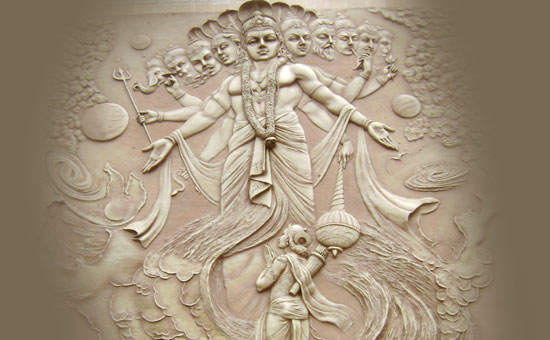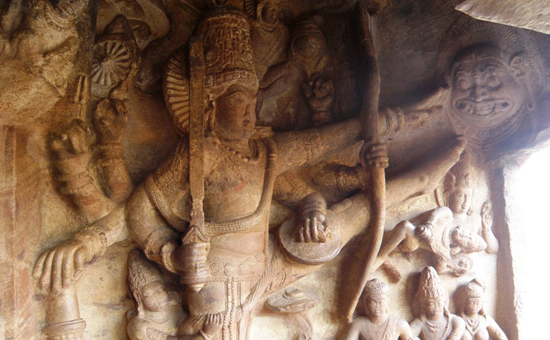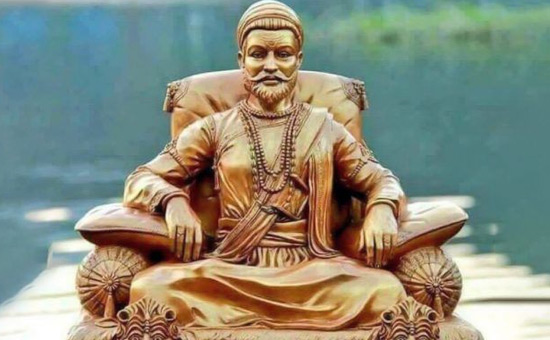-
Written in a simple format, these short stories
are as much for children as they are for parents.
The first lot of stories covers Guru,
significance of Ganga Saptami and Sambaji Maharaj, son of Shivaji.
Why did I start writing these Stories?As a mother of three I have realized
that many children are deprived of hearing tales that are Indian in origin. This
could be for various reasons, an important one being that parents themselves do
not know these tales.
The desire to learn English and about
Western Nations meant that atleast two generations were fed tales from the West
namely Sleeping Beauty, Cinderella, etc. Because of this when you ask a child
to write an essay of their favourite character they will write about Santa
Claus and Snow White but not Shivaji.
So I took it upon myself to write short stories about India’s cultural heritage. The stories have been written in such a way that they can be read to children. At the same time I added snippets of our culture, rituals, shlokas, food, etc. so that children get to know about them. Must add that these stories are not meant to be scholarly pieces of work.
This piece has stories on GURU, Ganga Saptami
and Sambaji Maharaj, son of Shivaji.
1 GURU – A RAY OF DIVINITY IN THIS MUNDANE WORLD
GURU is made up of two syllables “GU” and “RU”. GU means darkness and RU means light and so the combination indicates one who dispels the darkness of ignorance and bestows the light of knowledge or wisdom.
According to the Brahmanda Purana: “Guru is Shiva without his three eyes, Vishnu without his four arms, Brahma without his four heads. He is Parama Shiva himself in human form.”
The Grace of the Guru protects His devotees from
all danger; it also helps them to overcome difficulties. A King went out
hunting in a forest in his kingdom. Suddenly he felt the urge to visit his Guru
whose Ashram was in that very forest. He decided to leave his soldiers behind
and go alone to the Ashram. His horse spotted a snake and got so frightened
that it suddenly neighed uncontrollably, threw off the king and bolted. Now the
king was left alone in the forest.
With great difficulty he reached his Guru’s ashram, all bruised and in a bad state. He asked his Guru, "Guruji, all I wanted was to visit You. Why did I have to suffer such a fate?" The Guru just smiled and told him that he would get his answer when he reached home. The Guru lovingly fed him and gave him place to rest for the night.
Next day the Guru gave the king another horse
and the king reached his kingdom. As soon as he reached, he sensed that there
was great chaos in the palace. The King came to know that he had escaped an
attempt on his life the previous night. His servant had slept on his cot in the
night thinking that no one would know about it. But an enemy soldier managed to
enter the palace and mistook the servant to be the King. He beheaded him.
It was the Guru’s grace which made the King want to visit his Guru which protected him from certain death. He could not escape his karma of getting some injuries, but with Guru's blessings, he was alive.
 Guru
Guru
2 GANGA SAPTAMI
There are four Upavedas and one of them is Shilpa Veda written by Bhrighu Maharishi. This has information
on how to look after our Natural Resources like water, soil, minerals, animals,
human resources, etc. The one which talks about our rivers is part of the Dhatu Khand and is called Jala (water) Shastra.
Did you know that India has more than 400 rivers? A very interesting fact is that most other ancient civilizations grew on the banks of the main rivers of that land – like the Mesopotamian Civilization grew on the banks of the River Tigris; the Egyptian Civilization grew on the banks of the River Nile; the Chinese Civilization depended on the River Yangtze.
However, Sanatana Dharma and its
Bharatiya Civilization did not depend on only one river. For us, all water
bodies were holy and represented by Varun
Dev. So Sanatan Dharma
spread all over Bharat Varsha, not just around the Ganga or the Saraswati, etc.
We all know that in the Prayag, rivers
meet and every Prayag is considered holy. Recently the Kumbh was held at
Prayagraj. Symbolically, the Ganga and the Yamuna flow within us too and we
have a Prayag Sthaan too. Where is it? The Ida and the Pingala Nadis are the
Ganga and Yamuna rivers respectively. These naadis meet at the Sushumna. Thus
whosoever, through their Yogic practices, raise the Kundalini Shakti to meet at
the Sushumna acquire true knowledge or Brahman. Once they reach this point their
past karmas are dissolved and they attain Moksha.
Today is Ganga Saptami and let us learn
how the mighty Ganga was born.
Hiranyakashipu, the demon who was killed
by Narasimha Avatar had a son called Prahlad. And this Prahalad had a grandson
called Raja Bali. Bali was a good king and his people loved him. But he had one
problem. He did not want anyone to worship any God other than MahaVishnu.
And he was very arrogant – he would think that only what he did was correct … if anyone tried to tell him anything, he wouldn’t listen. Such a great king should be arrogant, right? One of God’s biggest blessings is that He removes the Ego of His true Bhakt. If ego is there in a person, that person will not be able to get Moksha.
 Story below depicted beautifully in Badami Caves Karnataka.
Story below depicted beautifully in Badami Caves Karnataka.
So MahaVishnu loved Raja Bali a lot and decided to subdue his ego. Raja Bali thought he was the richest and that he owned the heavens and the earth. So MahaVishnu came as Vaman (dwarf) to his house just when Bali was giving ‘Daan’ (a daan is not the same as Bhiksha – daan is given of something that you love). He asked for just enough space to keep his feet. Bali Maharaj laughed and thought that this small child will not take much space, so he agreed. Immediately Vaman became huge and with His one leg covered the whole earth and with the other He covered the whole Swarg-lok. Then from His navel, another leg appeared and He asked for Bali to give space to keep that foot. Bali Maharaj by now had realized that MahaVishnu Himself had come to his house. He bowed down and told Prabhu to keep His foot on his head. Vamana did so and pushed him to Naraka, where Bali now rules over.
When Vamana put His leg on Swarg-lok,
Brahma came running with His Kamandala and washed Vamana’s foot. The water that flowed from Vamana’s (MahaVishnu) foot became Ganga – the Pure. That is why Ganga is called Vishnu-putri. Towards the end of recitation of Vishnu-sahasranam,
we ask God to bless the Thirtha (holy water) by saying,
"sharire jharjhari bhoote vyaadhigraste kalevare |
aushadham jaahnavi toyam vaidyo naaraayano harih ||"
The rough translation of this would be “for our body which is suffering and our body beset with disease, the sacred water of the Ganga (Jahnavi) is the medicine and the doctor is Narayana (MahaVishnu) Himself.”
Jai
Ganga Maiyya! Keep our rivers and water bodies clean.
 Sambhaji Maharaj
Sambhaji Maharaj
3 SAMBHAJI MAHARAJ
Did you know that the modern day Sambaar, the favourite ‘daal’ of South India, owes its recipe to Sambhaji Maharaj of Maharashtra? Apparently when he was in Thanjavur, a place in Tamil Nadu, he wanted to make Amti (a Maharashtrian daal) for himself. The head chef was not to be seen and instead of Kokum, Sambhaji Maharaj used Tamarind along with Toor Daal in the curry. Everyone loved the curry and it was named ‘Sambaar’ after Sambhaji Maharaj.
See, Maharashtra and Tamil Nadu are
related! Till today you have many people of Maharashtrian origin who have
settled in Thanjavur. There is a Maratha Palace in Thanjavur.
Sambhaji Maharaj was the first son of
Shivaji Maharaj. He was well versed in statecraft and knew many languages. But
like any other brash youngster, he used to disobey his father and became
irresponsible. Shivaji Maharaj got very upset and to teach him a lesson, he
imprisoned him at the Panhala fort. Sambhaji and his wife escaped from the fort
and defected to the Mughals.
But within a year he realized that he
had done wrong. The Mughals wanted to send him to Delhi, but Sambhaji and his
wife went back to Shivaji Maharaj. Again he was sent to Panhala fort by his
father Shivaji, since he refused to repent for whatever he had done.
Soon Shivaji Maharaj passed away and Sambhaji’s step mother wanted to install her son on the throne. Sambhaji knew that his 10 year old step brother would not be able to rule. He again escaped from the Panhala fort by taking possession of that fort and also took control of the Raigad Fort. He ascended the throne and immediately attacked the Mughals and the neighbouring enemy states.
At that time the Portuguese colony of
Goa provided supplies to the Mughals. Sambhaji undertook such a severe campaign
against the Portuguese that they were scared of the Marathas. He recovered
Pratapgad and many other forts along the Western Ghats and Konkan areas. His
soldiers were called Mavalas.
Sambhaji was captured at Sangameshwar in
Maharashtra by the Mughal forces who had bribed some Maratha chieftains. This
time the Mughals did not want him to escape. They put him in chains, took him
to Ahmednagar (those days it was called Bahadurgad) and told him to convert to
Islam. Proud and brave Sambhaji refused. He was tortured and tortured, along
with his friend Kavi Kalash.
Aurangzeb insisted that if he converted to Islam he would be spared the torture. Brave Sambhaji refused and said “Not even if he was bribed with Aurangzeb’s daughter”. He
refused to accept Islam. For a full
fortnight they were tortured and this included plucking out their eyes and tongue, pulling out their nails and removing their skin.
Sambhaji was finally killed on 11 March
1689 on Gudi Padwa day. He was DHARMAVEER – Protector of Dharma. Sambhaji's body was cut into pieces and some pieces were thrown into the river and some thrown to the dogs. Some portions of the body were recaptured by the Marathas and cremated at the confluence of rivers at Tulapur.
He was barely 31 years of age when he died. He died protecting our Hindu Dharma. Naman to this brave son of Bharat – Dharmaveer Sambhaji Maharaj. Never forget.
Author is a mother to three children and writes on Spirituality, Women
Empowerment and National Affairs. Her articles are published on Indusscrolls.com
amongst others. She believes in the cause of the Indian Breed of Cows and is a follower
of Shree Ramachandrapura Matha, Karnataka.
Also read
1 Guru
as Awakener
2 Pictures
of Maratha Palace Thanjavur
3 Ganga
Sagar Pilgrimage